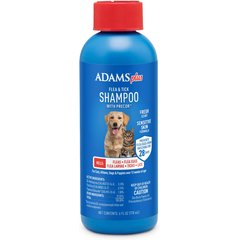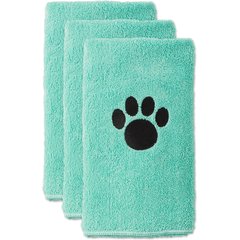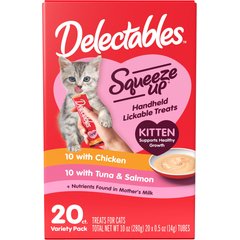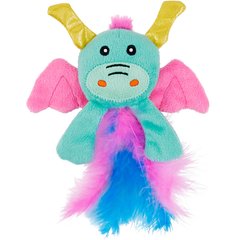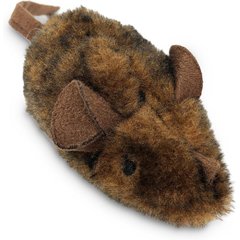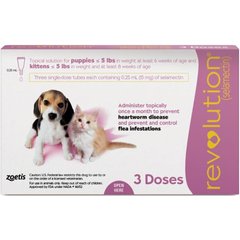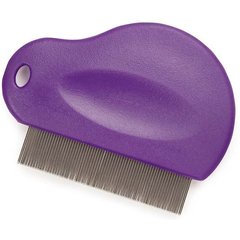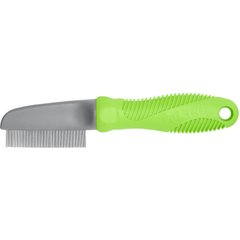How to Get Rid of Fleas on Kittens
Mukhina1/iStock / Getty Images Plus via Getty Images
Fleas can make kittens itchy, sick, and even cause serious blood loss (anemia).
Some methods for getting fleas off kittens—such as using a flea comb and baths—will only eliminate the adult fleas on your kitten. They don’t prevent new fleas from jumping on.
So how do you get rid of fleas on kittens? Which treatments are safe, and what are the best flea treatments for kittens?
Let's look at a few tips to consider when getting rid of fleas on kittens.
Key Takeaways
- Kittens can quickly become sick from fleas and from the effects of inappropriate flea treatments.
- There are numerous over-the-counter and prescription options available for flea treatment that are safe and effective for kittens.
- There are two ways to get rid of fleas on kittens that don’t require using flea products: bathing and flea combing.
How To Remove Fleas from Kittens
Kittens can quickly become dangerously sick—both from fleas and from the effects of inappropriate flea treatments.
Therefore, it’s vital that pet parents understand how to safely remove fleas from kittens. Never treat a sick kitten for fleas without first talking to your veterinarian.
1. Give Them a Bath
If your young kitten is facing a flea issue, a bath is the quickest way to start managing the problem, along with cleaning their environment and treating all pets in the home.
Most flea shampoos aren’t appropriate for young kittens, but simply rinsing a kitten in warm water will physically remove many adult fleas. If your kitten is more than 12 weeks old, a medicated flea shampoo may be an option.
When bathing kittens, it’s important to get them used to the water when they are young.
Cutting your kitten's nails first can be helpful in case they get scared and accidentally scratch you.
It’s important when bathing kittens—especially very young kittens—to have a plan on how to keep them warm and dry them quickly after their bath. Kittens can get cold easily and when they are wet, it speeds up the process.
Make sure you have a warm towel. Additionally, supervised heat support is recommended so kittens don’t get hypothermia. Using warm and not cool or cold water is also advised to help prevent too much heat loss during their bath.
Gradually introducing water to your new kitten is a good idea and can be accomplished by giving them a small bowl of water to play with. You can also dunk their paws in the water to show them that it’s not harmful.
Using treats and toys for positive reinforcement can also create a good bath time experience.
Use a small tub. Place a small ring of baby shampoo or Dawn dish soap around a young kitten's neck to prevent any fleas from crawling onto their face and to prevent soap from getting in their eyes and mouth.
Do not spray your kitten with water—instead, use a cup of water to gently rinse your kitten.
Make sure to remove all water from your kitten’s fur before drying them well with a towel or a hairdryer on the warm (not hot) setting.
Always keep your fingers in the flow of air to ensure that the heat remains low enough to prevent burns.
Never leave your kitten alone when using drying electronics, as they can overheat very quickly.
2. Don’t Use Products That Contain Permethrin
Cats have a poor ability to process certain drugs and chemicals that humans and dogs can easily handle. This poor processing ability means these substances can be toxic for cats at very low doses, even though they are perfectly safe for dogs and humans.
One of the chemicals cats have trouble with is permethrin, which is found in many flea medications.
While it is safe for dogs, it’s toxic to cats. Be extremely careful and check all flea products to make sure they don’t contain permethrin.
Read all labels very carefully. Even if a flea product is safe for cats, it does not mean that it is safe for kittens. If you’re not sure a product is safe, ask your veterinarian.
3. Do Not Use Essential Oils for Fleas on Kittens and Cats
Cats’ poor ability to process certain compounds also means that many kinds of essential oils can be toxic to cats, even at low doses and concentrations.
Many natural flea treatments use essential oils. However, essential oils can be very dangerous for cats, so it’s best to avoid these products, especially for kittens.
4. Look for Flea Treatments That Are Approved for Kittens
The best options for getting rid of fleas on kittens depends on their age and weight. An 8-week-old kitten usually only weighs around 2 pounds.
Most products are safe for use in kittens older than 8–10 weeks or over 2 pounds, but every product is different. Typically, flea products haven’t been tested on kittens younger or smaller than this, so they may contain doses that are too high for young, tiny kittens.
Always read the warnings and instructions carefully to be sure that a flea product will be safe and effective for your kitten. Consult your veterinarian to help you find products to get rid of fleas on your kitten, regardless of your pet’s size and age.
Revolution Topical Solution for Kittens and Puppies may be an option to discuss with your vet. This product is approved for kittens that weigh up to 5 pounds and are 8 weeks or older (and 6 weeks and older for puppies).
5. Use Natural Methods to Get Rid of Fleas on Very Young Kittens
There are two ways to get rid of fleas on kittens that don’t require using flea products: bathing and flea combing.
However, these treatments only get rid of the adult fleas living on your kitten; they won’t prevent any new fleas living in the environment from getting on your kitten or other pets. While these methods are not long-term solutions, they are safe for very young and small kittens that can’t safely use flea products yet.
-
Using a flea comb—For very young kittens—under 8 weeks—the safest option is using a flea comb on them once or twice a day. This will allow you to physically remove the adult fleas without exposing your young kitten to potentially toxic ingredients in products.
-
Giving your kitten a bath—As discussed above, bathing your kitten is another safe and effective option to help your kitten get rid of fleas.
Remember these five safety tips:
-
Don’t bathe your kitten more than twice a week. Frequent bathing can be damaging to their skin.
-
Keep your kitten warm during the bath and dry them quickly afterward. Kittens are not very good at maintaining their body temperature at this age.
-
Avoid flea shampoos. They aren’t intended for use in kittens under 12 weeks of age.
-
If you use soap, choose a non-medicated soap like Dawn or a baby shampoo. Soapy water helps prevent fleas from jumping out of the bathwater, although it isn’t necessary to remove or kill fleas.
-
Be sure to thoroughly rinse the soap off so your kitten doesn’t ingest it while grooming after the bath.
6. Start a Topical Treatment When Your Kitten Is Old Enough
Once kittens are 8–10 weeks old and are over 1.5–2 pounds, there are more options for topical flea prevention. These products not only kill fleas on your kitten but can prevent new fleas from hitching a ride on your pet.
There are numerous over-the-counter and prescription options available for flea treatment that are safe and effective for kittens. If you’re using an over-the-counter product, remember to check all ingredients and be sure to use the right dose for your kitten’s weight.
Fleas are more than just an annoyance. They can make kittens very sick and can even be deadly, so if you see fleas on your kitten, don’t ignore them.
Your veterinarian can prescribe a safe and effective product and give you guidance on which flea products would be best for your kitten.

